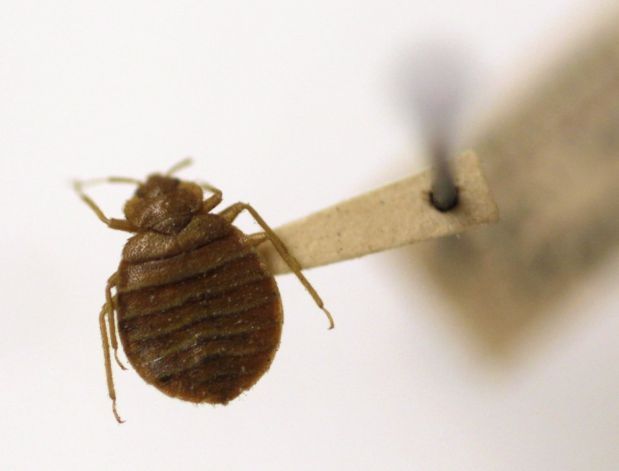If you’ve ever woken up with itchy red bites or noticed tiny rust-colored spots on your sheets, you may be facing one of the most frustrating pest problems imaginable — bedbugs. These small, flat, blood-sucking insects can quickly infest a home, hotel, or dormitory and are notoriously difficult to eliminate. One of the most effective tools in managing and monitoring an infestation is the bedbug trap.
In this detailed guide, we’ll explore what bedbug traps are, how they work, the different types available, and how to use them effectively for both detection and prevention. Whether you’re dealing with an existing infestation or want to protect your home proactively, understanding bedbug traps is your first line of defense.
What Are Bedbug Traps?
Bedbug traps are specially designed devices used to capture bedbugs in order to detect or reduce their population. These traps can be either active or passive, depending on how they attract the insects.
- Passive bedbug traps rely on the bedbugs’ natural movement. They often sit beneath furniture legs or along walls, catching bugs as they move around looking for food.
- Active bedbug traps use heat, carbon dioxide, or pheromones to mimic the presence of a human host, luring bedbugs into the trap where they become stuck or die.
The main purpose of bedbug traps is monitoring and control. They help identify infestations early and reduce the number of bedbugs over time without the use of harsh chemicals.
Why Bedbug Traps Are Important
Bedbugs are notoriously elusive. They hide in cracks, seams, and furniture crevices, emerging only at night to feed. Because they reproduce quickly, a small infestation can turn into a nightmare within weeks.
Using bedbug traps offers several key benefits:
- Early Detection:
The sooner you identify bedbugs, the easier it is to control them. Traps reveal their presence before the infestation spreads. - Non-Toxic Solution:
Many traps are chemical-free, making them safe to use around children and pets. - Continuous Monitoring:
Even after treatment, traps help ensure that the infestation is completely gone. - Affordable and Easy to Use:
Most bedbug traps require little setup and are inexpensive compared to professional extermination services. - Prevention Tool:
Placing traps in high-risk areas can prevent new infestations from taking hold.
How Do Bedbug Traps Work?
The principle behind bedbug traps is simple: attract and capture. Depending on the design, the trap uses different mechanisms:
- Interception Traps:
These are placed under bed or furniture legs. As bedbugs climb up or down to reach a sleeping host, they fall into the trap’s smooth, slippery walls and can’t escape. - Glue Traps:
Sticky traps use a strong adhesive to immobilize bedbugs once they step onto the surface. - Heat and CO₂ Traps:
Active traps that emit warmth and carbon dioxide, mimicking human presence to lure bedbugs out of hiding. - Pheromone Traps:
These traps use chemical signals that attract bedbugs, particularly effective for males searching for mates.
Each type has its advantages depending on the severity and stage of infestation.
Types of Bedbug Traps
Let’s break down the main categories of bedbug traps and their specific uses:
1. Interceptor Traps
Interceptor traps are among the most common and effective options. They are typically placed under each leg of the bed or sofa. The design includes a dual-walled pit that captures bedbugs either climbing up or down.
Pros:
- Highly effective for monitoring movement.
- Reusable and chemical-free.
- Easy to check and clean.
Cons:
- Do not attract bedbugs actively.
- Must be combined with other control methods for full elimination.
2. Glue or Sticky Traps
Glue traps work like flypaper for bedbugs. They use a strong adhesive that traps bugs on contact.
Pros:
- Simple and affordable.
- Good for identifying bedbug hotspots.
- Can be placed almost anywhere.
Cons:
- Must be replaced regularly.
- Not as effective for large infestations.
3. CO₂ and Heat-Based Traps
These active bedbug traps simulate a human host by producing carbon dioxide and heat. Bedbugs, drawn by these signals, approach the trap and are captured.
Pros:
- Highly effective in luring hidden bedbugs.
- Useful for confirming infestations.
Cons:
- More expensive.
- Require electricity or batteries.
- Need regular maintenance.
4. Pheromone Traps
Pheromone traps attract bedbugs using scent cues. These are commonly used for monitoring in hotels, dormitories, or multi-unit buildings.
Pros:
- Effective for early detection.
- Can target specific bedbug behaviors.
Cons:
- Best used with other traps for optimal results.
Where to Place Bedbug Traps
Placement is critical to the success of any bedbug trap. Here are the best locations:
- Under bed and furniture legs – where bedbugs try to climb up or down.
- Near headboards or baseboards – common hiding spots.
- Under mattresses and along seams – prime travel paths.
- Around sofas, recliners, or chairs – especially in living rooms.
- Luggage areas and closets – for prevention during travel or after guests visit.
Always place multiple traps in suspected areas for comprehensive monitoring.
DIY Bedbug Traps: Can You Make One at Home?
Yes! While commercial traps are more efficient, DIY bedbug traps can be a cost-effective temporary solution. Here are a few methods:
- Soap and Water Trap:
Mix dish soap and water in a bowl and place it under a light source. Bedbugs attracted to the heat may fall in and drown. - Tape Trap:
Apply double-sided tape around bed legs or mattress seams to catch moving bedbugs. - Sugar and Yeast CO₂ Trap:
Mix sugar, yeast, and warm water in a container. The yeast produces carbon dioxide, which lures bedbugs into the trap.
While DIY traps can help detect infestations, they’re not as reliable as professional or store-bought options for long-term management.
How to Maintain and Check Bedbug Traps
Regular monitoring is key. Here’s how to keep your traps effective:
- Inspect traps weekly. Check for bedbugs, exoskeletons, or eggs.
- Clean reusable traps by washing with warm water and mild soap.
- Replace sticky traps every 1–2 weeks or sooner if full.
- Record findings to track infestation progress or decline.
- Combine with cleaning and vacuuming for best results.
If traps continue catching bedbugs after several weeks, you likely need professional pest control.
Bedbug Trap Myths and Misconceptions
There are many misconceptions about bedbug traps. Let’s clear up a few:
- Myth 1: Traps eliminate all bedbugs.
Truth: Traps are monitoring tools. They help reduce numbers but should be part of a broader pest management plan. - Myth 2: Bedbugs can’t escape traps.
Truth: Some active traps lose effectiveness over time. Always maintain and replace them regularly. - Myth 3: You only need traps on the bed.
Truth: Bedbugs travel far; placing traps around multiple areas ensures full coverage.
Combining Bedbug Traps with Other Control Methods
To completely eradicate bedbugs, traps should be part of an integrated approach:
- Vacuuming and Steam Cleaning:
Remove eggs and nymphs from carpets, mattresses, and furniture. - Heat Treatment:
Wash bedding and clothing in hot water and dry at high heat. - Encase Mattresses and Pillows:
Use bedbug-proof covers to prevent reinfestation. - Declutter Your Space:
Reduce hiding spots to make traps more effective. - Professional Extermination:
In severe cases, a pest control expert can apply heat or insecticide treatments.
Preventing Future Bedbug Infestations
Prevention is just as important as treatment. Here are some proven ways to stay bedbug-free:
- Inspect second-hand furniture before bringing it indoors.
- Use bedbug interceptors under bed legs permanently.
- Vacuum regularly to remove stray bugs or eggs.
- Be cautious while traveling — inspect hotel rooms and keep luggage elevated.
- Seal cracks and crevices in walls and furniture.
Consistent use of bedbug traps and routine inspections can save you from another costly infestation.
Conclusion: Stay Ahead of Bedbugs with the Right Traps
Bedbugs may be small, but they’re one of the most persistent pests to manage. Fortunately, with the right bedbug traps, you can monitor, detect, and reduce their population before it becomes a major problem.
Whether you choose interceptor traps, CO₂-based traps, or a mix of both, these simple tools provide invaluable insight into your pest situation. Remember, traps are not a one-time solution but an essential part of an ongoing bedbug prevention strategy. Combine them with regular cleaning, heat treatment, and vigilance, and you’ll reclaim your space — bite-free and peaceful once again.

